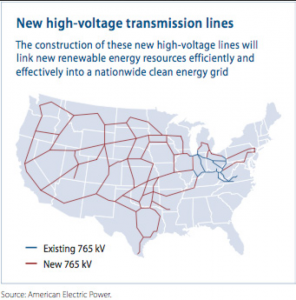Capacity Factor
When analyzing the overall efficiency of an electrical power plant, the capacity factor is often used to get a better idea of how well the plant operates. The capacity factor of a power plant is defined as the ratio of how much electricity is actually produced in a given period of time to the maximum, ideal amount of electricity that could be produced in that time. This is an easily measured quantity, making it an effective way to compare different types of power plants. The calculation for finding a capacity factor would be set up with the measured value of power output in megaWatt hours in the numerator of the ratio while the denominator would be the number of days the measurement was taken over multiplied by a conversion factor to equate days to hours multiplied by the power plant’s maximum capacity. Geothermal power plants have been quoted to have capacity factors around 73% according to Bloomberg New Energy Finance. When compared to a coal fired power plant with a capacity factor typically averaging around 60% or a natural gas plant at 45%, it is apparent that geothermal power plants have the potential to be more efficient than traditionally fueled power plants. Having a higher capacity factor essentially means that the plant performs closer to its ideal, peak level of performance.
Transmission Losses
Another consideration for the efficiency of geothermal power plants is the issue of transmission losses, which include the electrical energy that is lost when it has to flow through power lines. These losses vary with the amount of current that is flowing through the wires, the length of the wires and therefore the proximity of the power plant to the homes and businesses that are powered by these plants. Since there is a fairly limited area in the United States where geothermal energy can be adequately used to fuel a power plant, transmission losses have become a large issue. In the United States the problem of transmission losses is being addressed. New, improved power lines are being installed to better handle the higher voltage that a geothermal plant can produce. These lines are anticipated to significantly reduce transmission losses which ultimately makes the involved power plants more efficient.
The image below illustrates where these new electrical lines are being installed in the United States.
Primary Author: Allison Scoular
Edited by: Kyle Brennan
Works Cited:
“Capacity Factors of Geothermal Plants, a Global Analysis by Bloomberg New Energy Finance.” Think GeoEnergy Geothermal Energy News. Think Geo Energy, 24 Jan. 2012. Web. 01 May 2014. <http://thinkgeoenergy.com/archives/9644>.
“Geothermal Energy Basics.” NREL: Learning About Renewable Energy. U.S. Department of Energy, Office of Energy Efficiency and Renewable Energy, 30 May 2012. Web. 10 Apr. 2014. <http://www.nrel.gov/learning/re_geothermal.html>.

